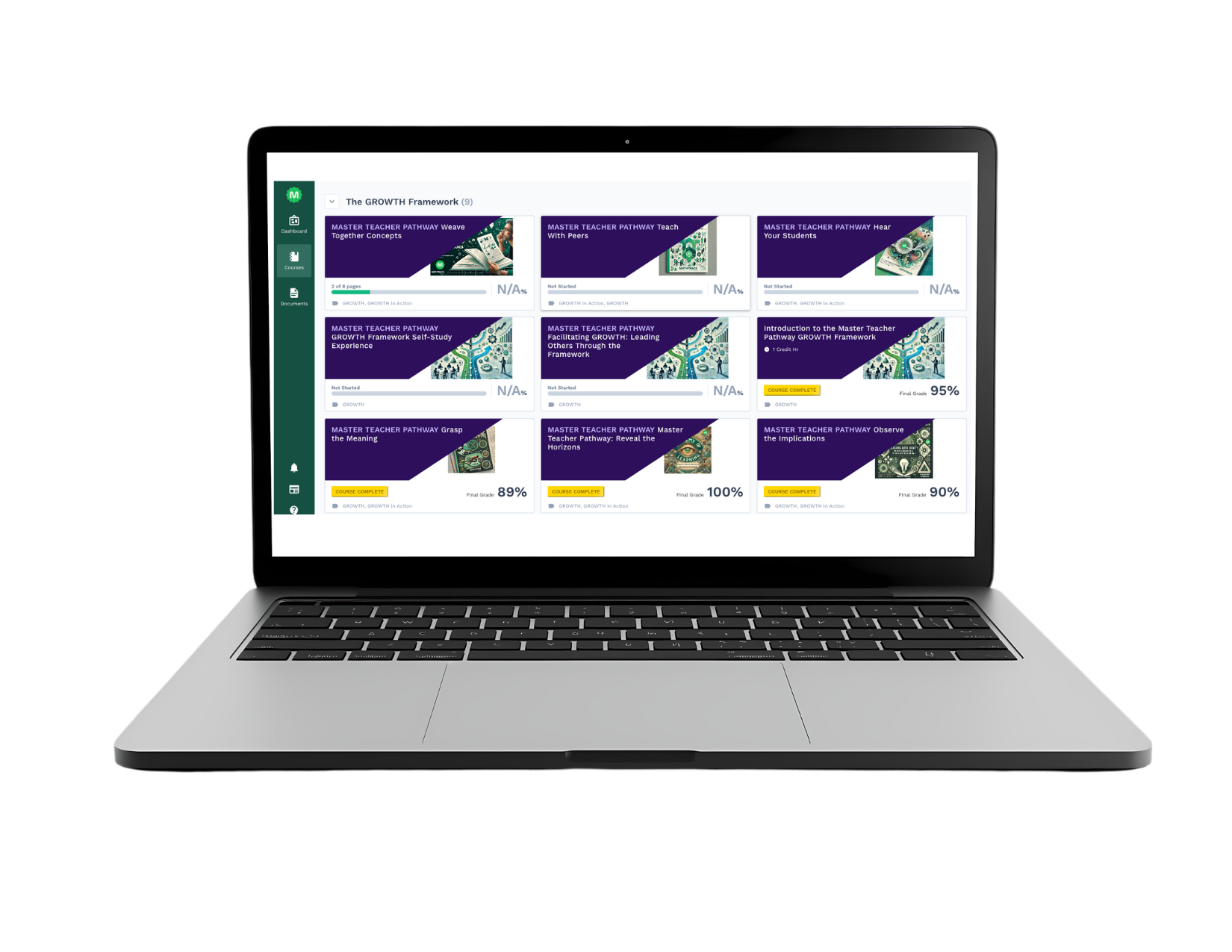Mathematics Professional Development Goals for K-12 Educators
Transform your classroom by joining a fellowship of educators who see mathematics not as memorization, but as a story of discovery and growth.
| Individual & Team Pricing | Year Round | Online | Fellowship |

Introduction to Professional Development Goals
Why Set Professional Development Goals?
Well-defined PD goals ensure that time and resources translate into meaningful growth. They bring focus and intention to professional learning, serving as benchmarks that help educators see progress, celebrate achievements, and identify areas for deeper development. In this way, goals do more than measure—they illuminate the path forward.
The Impact on Teacher Effectiveness
When teachers grow, classrooms change. High-quality PD equips educators with both new strategies and a renewed vision. By exploring innovative practices, leveraging technology, and refining pedagogy, teachers become more confident storytellers of mathematics—able to spark curiosity, build understanding, and sustain engagement.
The Connection to Student Performance
Professional development is not an end in itself; its power is measured in the lives of students. As teachers refine their craft, they meet diverse learning needs with confidence, encourage critical thinking, and make mathematics meaningful. The result is classrooms alive with discovery, where students are engaged, capable, and prepared for success.
Strengthening Teacher Retention
Supporting teachers through intentional PD is also an investment in stability. When educators feel valued, equipped, and part of a fellowship of growth, they are more likely to stay and thrive. PD nurtures not only teaching skills but also a sense of belonging, satisfaction, and loyalty—key to building strong, enduring teaching communities.
“This is a life-changing opportunity for me. I wasn’t sure I could teach math, but with MathTrack I’m now leading all Middle School classes in my school.”
— Erica Baker, MathTrack Candidate Teacher (Previously a substitute teacher)

Empowering Teacher Effectiveness
Teachers shape every student’s learning story. Setting clear professional development goals helps schools create environments that foster growth, renewal, and excellence.
Elevating Student Performance
Student achievement is the true measure of professional development. By setting goals that focus on engagement, critical thinking, and meaningful math experiences, educators create classrooms where students gain confidence, discover connections, and are prepared for the challenges ahead.
Fostering Teacher Retention
Stable, experienced teachers shape lasting learning. Professional development goals that value educators, support growth, and honor their dedication build a culture of belonging—reducing turnover and sustaining strong, thriving teaching communities.
Recognition Matters
Acknowledging teachers’ dedication fuels motivation and loyalty. Professional development that celebrates effort and achievement builds morale, strengthens community, and honors educators as vital storytellers of mathematics.
Aligning Goals with School Priorities
Effective PD harmonizes teacher growth with school-wide objectives. By tailoring goals to elementary, middle, and high school needs, schools create cohesive strategies that improve outcomes while honoring the unique story of each learning environment.
SMART Goals for PD
SMART goals—Specific, Measurable, Achievable, Relevant, and Time-Bound—turn vision into action. They give educators clarity, focus, and realistic timelines, ensuring professional development leads to meaningful growth and measurable impact.
